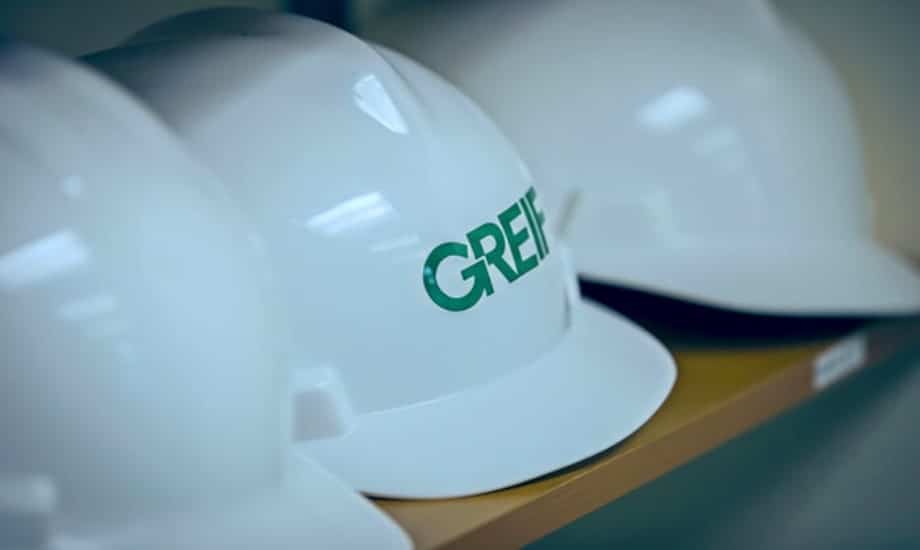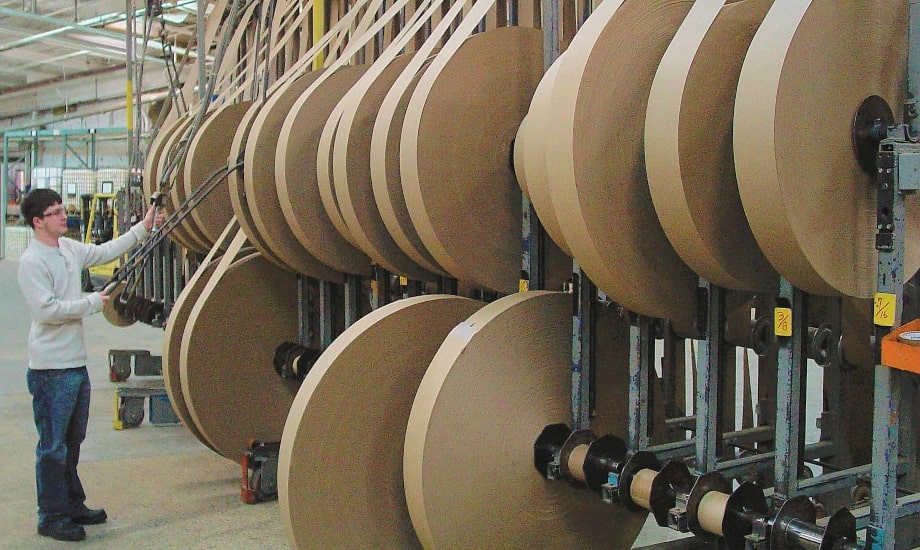Why Water Matters
As a global manufacturing company, Greif has a responsibility to minimize our water use and improve water quality, particularly in our most water intensive operations. Responsible water management reduces our demand for water as water scarcity and water costs are rising and ensures that water discharge from our facilities is treated and safe to protect the health of the communities in which we operate. Our water management practices simultaneously achieve these aims while creating operational efficiencies and minimizing regulatory risk.
ממשל
Only 1%
total water consumed in regions with high water baseline stress
המאמצים שלנו באיכות המים אפשרו לנו כבר לעמוד ביעד ה-10% שלנו עד 2025.
Greif monitors Key Performance Indicators (KPIs) to ensure proper treatment of our wastewater. If a treatment incident occurs, the facility manager would observe a change to these KPIs, which initiates an investigation to determine the root cause and resolve the problem. When necessary, Greif engages third-party experts to support our investigations. For example, in 2020 Greif’s Tama mill experienced high biochemical oxygen demand (BOD) and nitrogen concentrations. Greif contracted with a third party to conduct a site inspection and recommend corrective actions. Based on their recommendations, we increased nutrient addition, instituted improved analytical testing to monitor nutrient levels and introduced chemical oxygen demand (COD) testing to receive faster feedback on potential issues.
While Greif’s water impact is predominately in our PPS operations, we take steps to curb water use across all our operations, particularly in water-stressed regions in Latin America, Africa and the Middle East. In these facilities, and across all our operations, we reduce water pressure where it is higher than needed, replace leaky valves and collect and use rainwater when possible. Our Global Industrial Packaging facility in Riyadh, Saudi Arabia implemented many such measures in an effort to reduce and recycle their wastewater, ultimately resulting in a 32 percent reduction in waste to landfill from their facility. Please see our לְבַזבֵּז page for more information on their achievement.
In 2021, we will develop standard environmental data dashboards across our mills to better understand and manage water and effluent, as well as energy data, and continue working to identify water efficiency opportunities.
מטרות והתקדמות
In 2017, Greif announced a 2020 goal of 10 percent reduction in kilograms of biochemical oxygen demand (BOD) per metric ton of production, from a 2014 baseline of 1.47, at legacy Greif mills. Our 2017 materiality process led to the creation of new 2025 goals and restating our BOD goal as a 2025 goal. Additionally, in 2021, we plan to create 2030 goals and targets in line with the American Forest and Paper Association.
In 2018, we reevaluated our historical water use and BOD data to confirm our baseline and assumptions to support continual improvement related to water. Through this process, we restated our 2014 BOD baseline to 1.40.
2025 Goal: Reduce BOD discharged in kilograms by 10 percent per metric ton of combined production from the Riverville and Massillon mills using the 2014 restated baseline by the end of fiscal year 2025.
Progress: Since 2017, we have reduced BOD per metric ton of production by 71.8 percent in our legacy Greif containerboard mills. Our significant progress against our BOD goal was enabled by the installation of a wastewater treatment facility at our Massillon mill. Completed in July 2017, the project led to modest improvements in 2017 and far surpassed expectations in 2018. These benefits continued to be realized in 2020.
In 2021, we will continue to track our progress in reducing BOD while controlling specific water use in our mills and reevaluate our goals to include both our legacy Greif mills and Caraustar mills that are now part of our organization. Additionally, in 2021, we will announce new water reduction targets for our mills.
Performance Data
WATER*
|
|
שנת 2016 |
שנת 2017 |
שנת 2018 |
שנת 2019 |
שנת 2020 |
|---|---|---|---|---|---|
|
הוצאת מים (אלפי קוב)* |
8,420.2 |
9,666.3 |
9,360.8 |
13,864.4 |
12,936.6 |
|
מים עיליים |
- |
9,242.7 |
8,630.0 |
10,266.8 |
10,132.0 |
|
מי תהום |
- |
423.6 |
730.7 |
3,597.6 |
2,804.6 |
|
מי גשמים |
- | - | - | - | - |
|
שפכים |
- | - | - | - | - |
|
מים עירוניים† |
- | - | - | - | - |
|
הזרמת שפכים (אלפי מ"ק)** |
7,961.4 |
8,983.2 |
9,316.2 |
12,403.92 |
11,935.1 |
|
ג'יימס ריבר |
- |
8,788.8 |
8,907.1 |
7,949.5 |
8,375.0 |
|
העיר מסיון |
- |
191.6 |
407.1 |
424.0 |
355.8 |
|
נהר טוסקרוואס |
- |
2.8 |
2.0 |
2.5 |
8.8 |
|
Sweetwater Creek^ |
- |
- |
- |
0.0 |
0.0 |
|
WWTP של מחוז קוב^ |
- |
- |
- |
844.9 |
855.0 |
|
מחוז הביוב המטרופולין של סינסינטי^^ |
- |
- |
- |
37.6 |
40.6 |
|
מחוז הביוב המטרופולין של מילווקי^^ |
- |
- |
- |
349.0 |
335.9 |
|
מחוז התברואה של מחוז לוס אנג'לס WWTF^^ |
- |
- |
- |
196.8 |
189.1 |
|
Three Mile Creek^ |
- |
- |
- |
0.0 |
- |
|
Village of Baltimore WWTF** |
- |
- |
- |
0.0 |
6.1 |
|
West Branch Paw Paw Creek** |
- |
- |
- |
697.1 |
581.4 |
|
סן חוזה-סנטה קלרה אזורי WWTP^^ |
- |
- |
- |
288.1 |
334.2 |
|
טקומה מרכזית WWTP^^ |
- |
- |
- |
6.9 |
8.5 |
|
עיר פיטצבורג WWTP^ |
- |
- |
- |
322.6 |
309.0 |
|
נהר איווה** |
- |
- |
- |
291.8 |
364.9 |
|
Cherry Lake** |
- |
- |
- |
597.8 |
550.4 |
|
יובל איווה** |
- |
- |
- |
58.0 |
78.6 |
|
דרישת חמצן ביוכימית (אלפי ק"ג) |
1,050.4 |
890.4 |
204.2 |
3,508.3 |
3,457.1 |
|
סה"כ מוצקים מרחפים (ק"ג) |
546,857 |
465,098 |
349,003 |
1,224,442 |
1,045,928 |
|
זרחן (ק"ג) |
5,728 |
4,991 |
6,617 | 4,708 | 4,445 |
|
ייצור (MT) |
665,000 |
690,000 |
713,336 |
1,729,062 |
1,661,228 |
|
שיעור צריכה (מ3/MT) |
12.7 |
14.0 |
13.1 |
8.02 |
7.79 |
הערות:
- הנתונים של 2015 עד 2018 הם משתי מפעלי הנייר של Greif, שאחד מהם ממוקם בריברוויל, וירג'יניה, והשני במסיון, אוהיו. מבחינה היסטורית, שתי מפעלי הנייר הללו היוו יותר מ-90% מטביעת הרגל העולמית של גרייף. הם שואבים מנהר ג'יימס ומבארות מים באתר, בהתאמה. נתוני 2019 כוללים 12 מפעלי Caraustar לשעבר שנרכשו והשתלבו ב-2019. כל נתוני 2019 הם נתוני שנה מלאה. איכות מי השפכים המוזרמים מהמפעלים שלנו עומדת בדרישות ההיתרים. לא נעשה שימוש במים שהוזרמו על ידי ארגון אחר. WWTP = מתקן לטיהור שפכים.
- נתוני שנת 2019 כוללים את ה-Mobile Wright Smith WWTP, שנסגר בשנת 2020, והוגדר מחדש כדי לתת חשבונות כראוי לפריקת ה-West Branch Paw Paw Creek של שנת 2019.
**טופל בבירור ראשוני, בירור משני ואוורור לפני פריקה ישירה
^ מטופל בטיפול מקדים בשפכים כולל הסרת BOD מסיס
^^ מטופל בטיפול מקדים בשפכים עם מוצקים בלבד.
† Greif אינו עוקב כעת אחר הוצאת מים עירוניים.
|
שימוש במים באזורים עם מתח בסיס גבוה או גבוה במיוחד* |
שנת 2020 |
|---|---|
|
הוצאת מים (אלפי מ"ק) |
170.4 |
|
אחוז משיכת המים הכוללת |
1% |
|
צריכת מים (אלפי מ"ק) |
162.7 |
|
אחוז מסך המים הנצרך |
1% |
Improving Our Wastewater
In 2017, Greif’s Massillon, Ohio mill completed construction of a water treatment facility to significantly reduce the biological oxygen demand (BOD) of the plant’s discharge water before being returned to the municipal treatment plant. High BOD levels promote bacteria growth, release odors and must be controlled using chemicals. Since installing the treatment facility, we reduced BOD discharged to the municipal system by over 96 percent, contributing to our 2025 BOD reduction goal. This also eliminated several chemicals that were previously needed to control bacteria.

Water Reduction at Our Baltimore, Ohio Mill
In 2020, Greif’s Baltimore, Ohio mill transitioned from direct discharge of treated wastewater to a local creek to discharging pretreated wastewater to a local water treatment facility that uses a state-of-the-art membrane treatment system to further treat water. This shift both reduced overall water discharge and supported returning cleaner water to the community. Greif engaged with local and state governments over the course of multiple years to design and approve the project, which was approved in 2019 and completed in October 2020. The project will reduce water consumption by 550,000 m3 per year. The community benefits from a cleaner surface water since several tons per year of biological oxygen demand and total suspended solids were also removed from the local creeks because of this transition.

דגשים בנושא קיימות
Only 1%
Total water consumed in regions with high water baseline stress
המאמצים שלנו באיכות המים אפשרו לנו כבר לעמוד ביעד ה-10% שלנו עד 2025.



